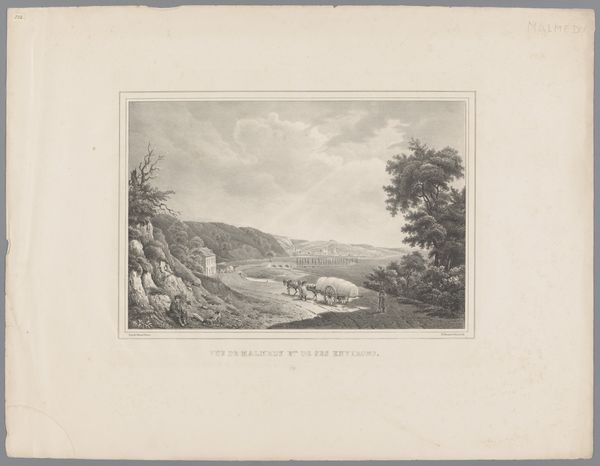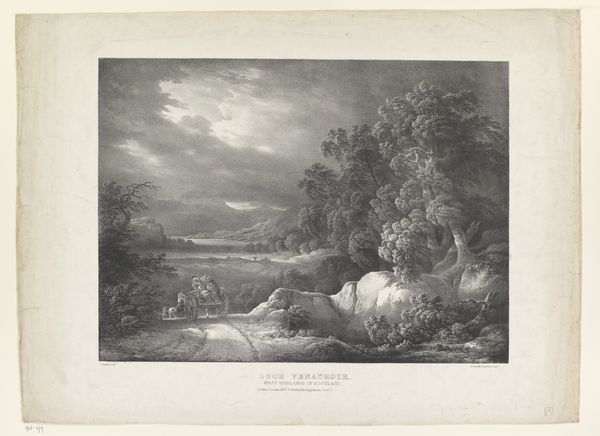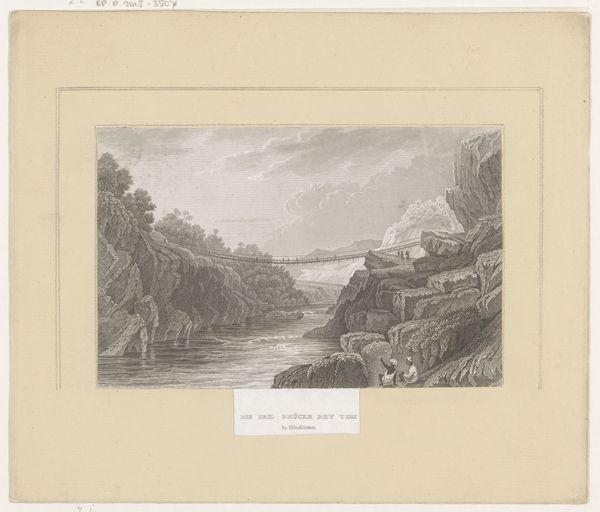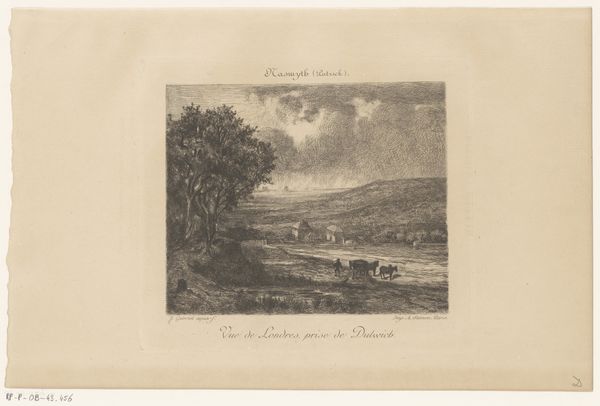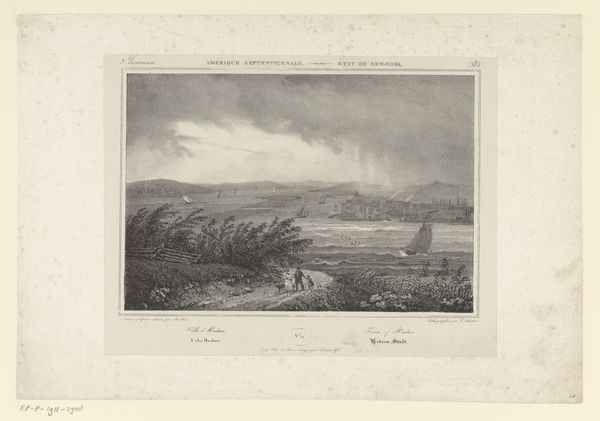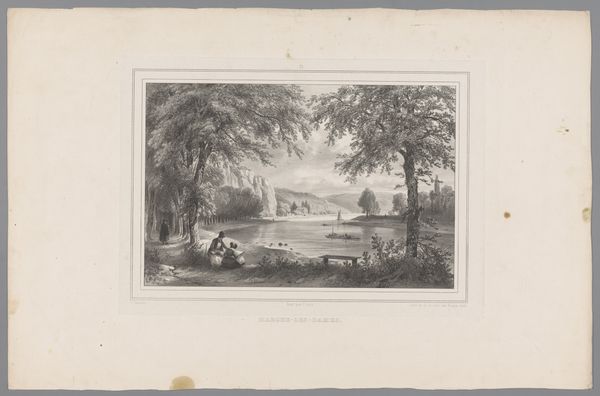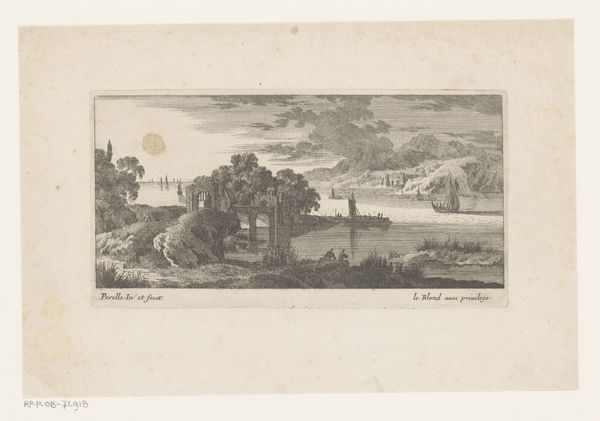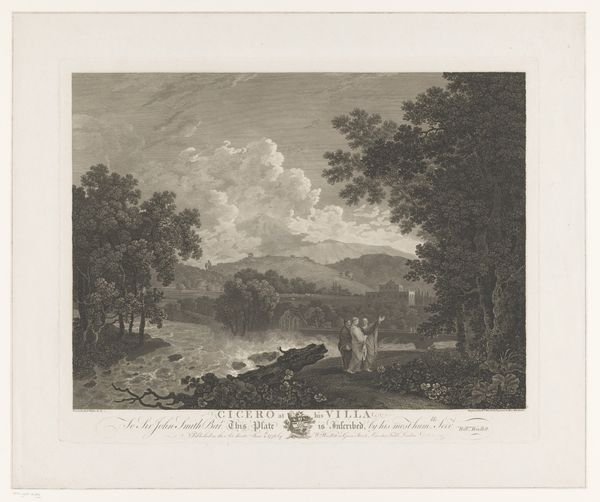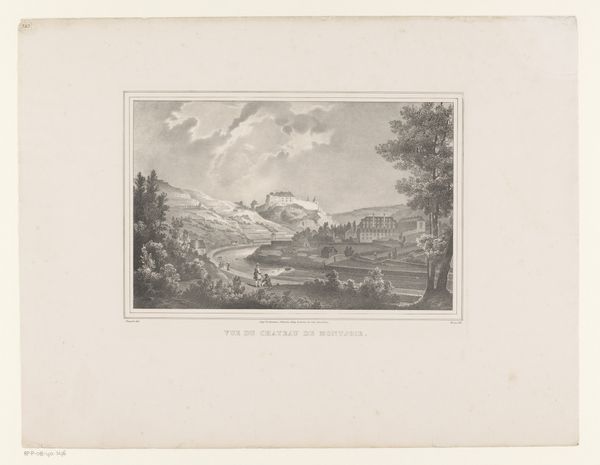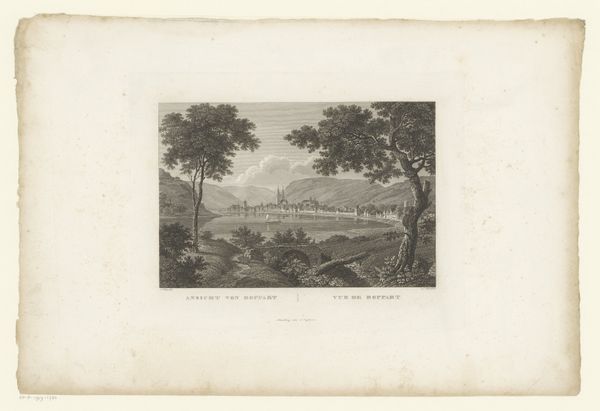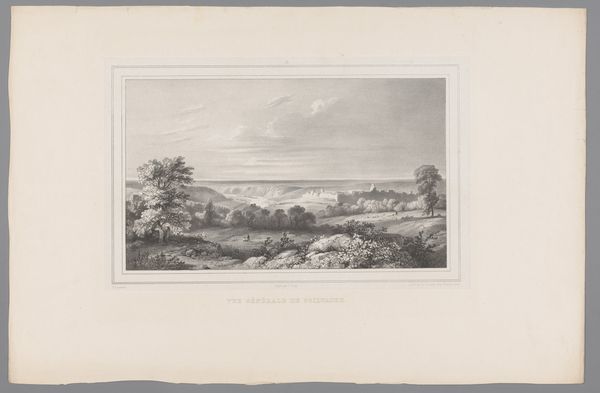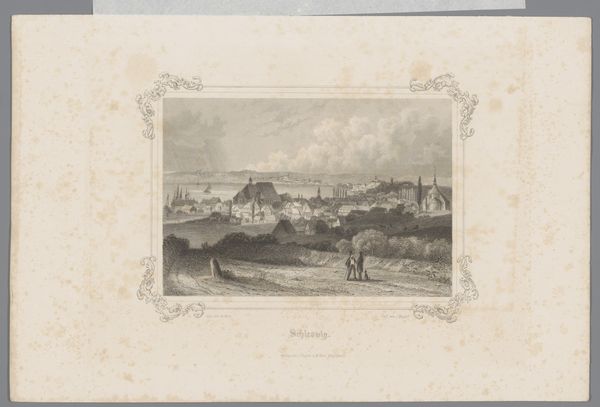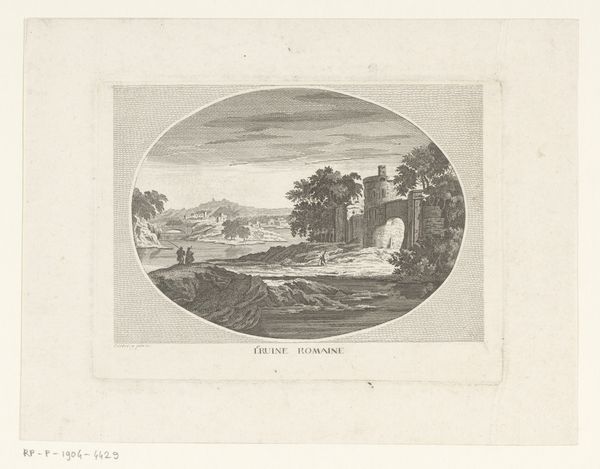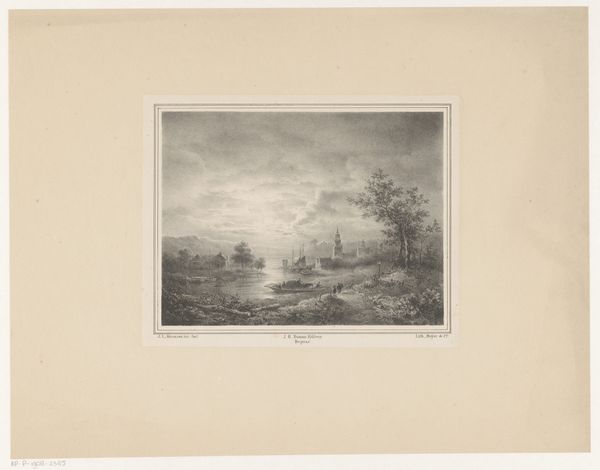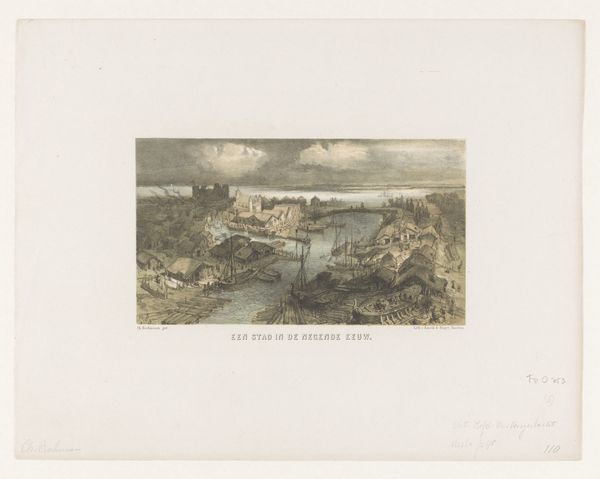
print, etching, engraving
# print
#
etching
#
landscape
#
romanticism
#
cityscape
#
engraving
Dimensions: height 88 mm, width 138 mm
Copyright: Rijks Museum: Open Domain
Curator: This is George B. Ellis's "Maanlicht", made sometime between 1821 and 1838. It’s an etching and engraving, showcasing a nocturnal landscape. What are your first impressions? Editor: Somber, yet luminous. The stark contrast between the inky shadows and the bright moonlight creates an almost theatrical atmosphere. The lone travelers in the foreground are an intriguing addition to this otherwise very desolate image. Curator: The work’s focus on the landscape fits into the Romanticism style, prioritizing sublime and often overwhelming experiences of nature. I’d like to consider its social function—landscape art became popular with the rising middle class as a form of accessible aesthetic experience. Do you see any commentary on access or even ownership in this work, or any relationship between the depicted laborers in this idyllic setting? Editor: I’m drawn to the actual labor that went into creating this image. Consider the fine, detailed work required for an engraving like this—the precise control of the tool to achieve that range of tone. This etching suggests industrial precision; the lines almost appear manufactured, which is in contradiction to the supposed romantic ideals it’s presenting. It speaks of process over pure artistic gesture. Curator: Absolutely. Engravings, and prints more broadly, became important tools for disseminating images, making art more readily available, and creating visual cultures. It democratized art, in some ways. The distribution methods used can explain art’s popularity and spread of influence in new socio-political movements. Editor: Yet the layers of reproduction also add a level of mediation to what we see, separating us further from an "authentic" experience of nature itself. Is it pure artistry or skillful craftsmanship capitalizing on Romantic ideals for distribution? The materials suggest mass reproducibility for profit and easy consumption, further distorting any supposedly inherent relationship between man and the environment that Romanticism likes to present. Curator: Interesting, these points speak to the inherent paradoxes of the Romantic movement and its relationship to industrialization and distribution networks in Georgian England. Well, regardless, “Maanlicht” certainly provides much food for thought. Editor: Indeed. The complexities in the image prompt consideration of how art production is deeply entrenched with economics and market accessibility rather than simply being beautiful.
Comments
No comments
Be the first to comment and join the conversation on the ultimate creative platform.
